The South Dakota Voter Survey was conducted in the first two weeks of October by The South Dakota Polling Project, a research group housed in the School of American and Global Studies at South Dakota State University. Our survey of 485 registered voters in South Dakota asks respondents about a number of ways that the COVID-19 pandemic has affected their daily lives and how they feel about the general impact of the pandemic on our state and nation as a whole. The margin of error is +/- 4.5%, on par with other state-wide polls.
Restriction of Daily Activities
The present coronavirus significantly affects the lives of South Dakotans, despite the fact that we have not adopted nearly as many restrictions as other states. We ask respondents what activities they commonly engaged in before the pandemic and whether they are comfortable doing those same activities now. Only 44% report that they would now eat at a restaurant compared to 95% who regularly did so before the pandemic started. Similarly, only 38% are comfortable spending a night at a hotel now compared to 78% who did before. Only 20% show willingness to travel on a plane without hesitation, compared to 65% before. The activity that is affected the least is attending religious services, with 38% of people reporting a hesitance to attend, compared to 61% regularly attending prior to the pandemic. A total of 36% of respondents answer that they are not comfortable engaging in any of these activities.
The Use of Masks
Despite the politicization of this issue, about two-thirds of respondents report always or almost always wearing a mask when inside stores or other businesses. Just over 16% mention that they wear masks inside some of the time, and 13% say that they hardly ever wear a mask. In their own communities, respondents report that 20% of the people wear a mask inside stores all or most of the time. Half of the respondents report observing only some of the people wearing masks and 23% observed only a few wearing masks inside stores or businesses. Less than 1% say people in their communities never wear masks. Overall, respondents report that their own mitigation efforts are more stringent than their fellow citizens.
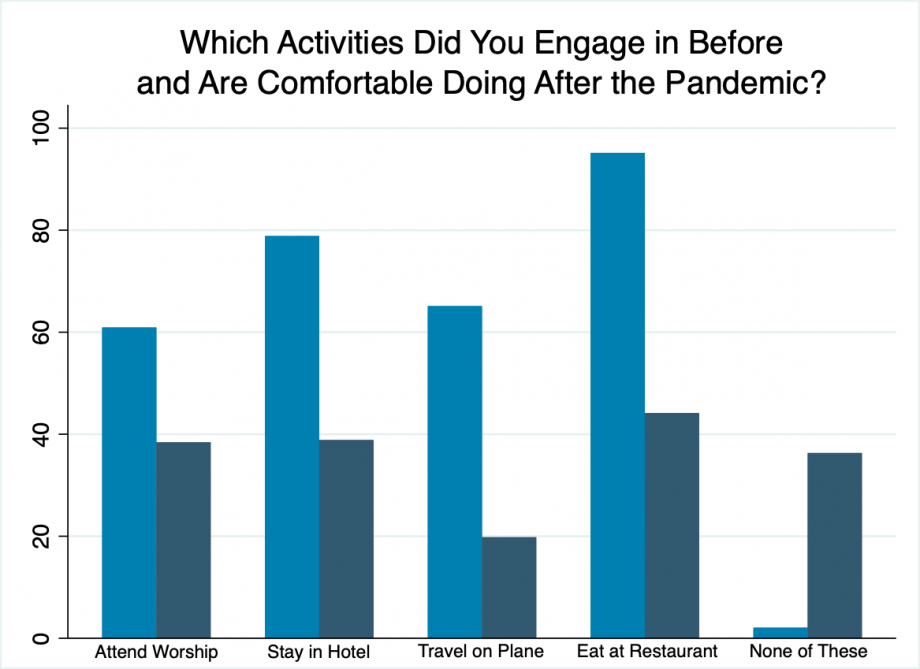
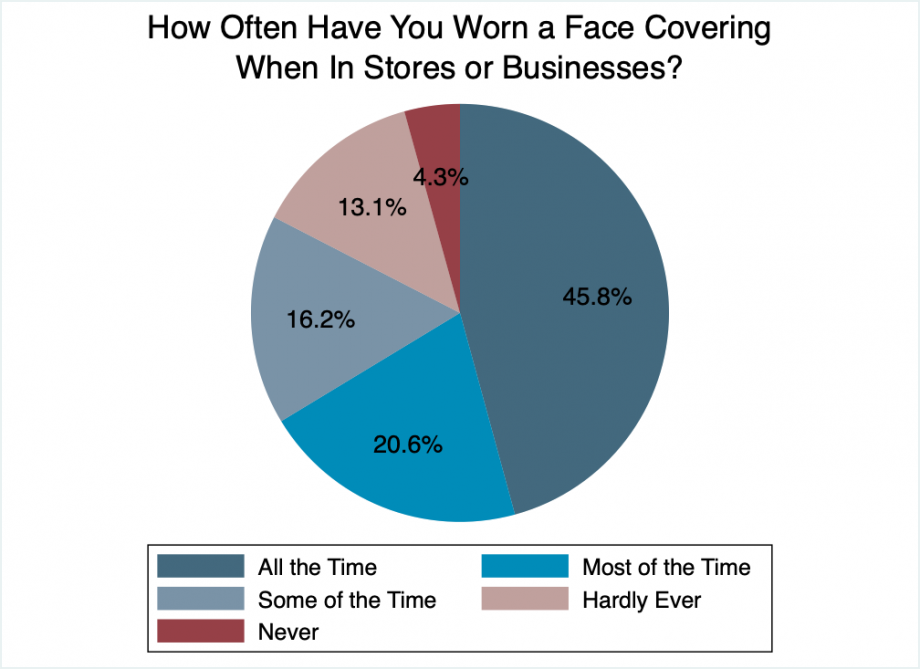
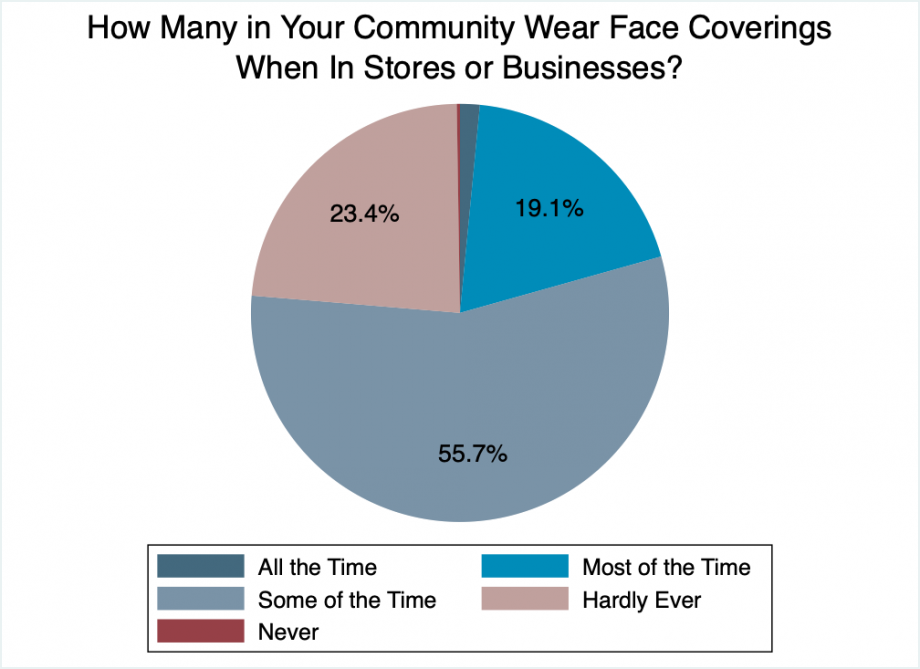
The Partisan Nature of Individual Response Measures
Unfortunately, but perhaps not surprisingly, we have seen a strong partisan difference in the personal responses people have taken as a precaution to infection from the coronavirus. Respondents that identify as Democrats report uniform behaviors in the principal preventative measures suggested by the Centers for Disease Control and Prevention: handwashing, avoiding large groups, and wearing a face covering. More than 96% of Democrats report increased handwashing, are avoiding large groups, and wearing a face covering; and 82% report avoiding people in general. Fewer than 1% of Democrats said they have taken no special preventative measures. Not only are Republicans less likely to report special measures taken, there is a rather sharp difference in the rates of Republicans taking the various measures. Approximately 70% of Republicans say they are washing hands more, 53% avoiding large groups, 29% avoiding people and 41% are wearing face coverings; while 22% of Republicans are taking no preventative measures at all.
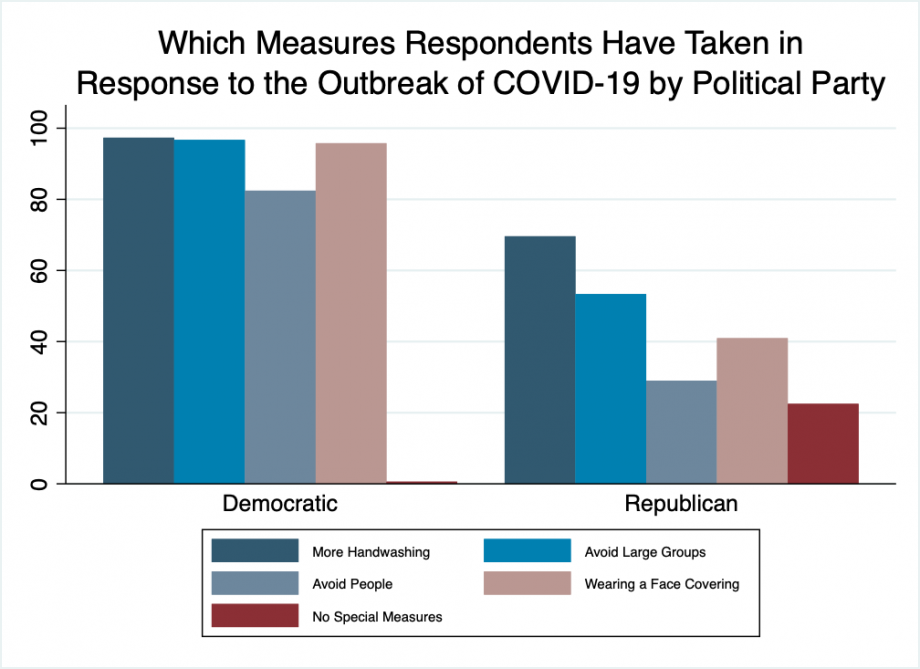
How Long We Expect Disruption
South Dakotans are not optimistic when it comes to the expected length of disruption caused by the coronavirus pandemic. Only a quarter believe that disruption to travel, school and work will subside before the end of 2020. Nearly 43% believe that disruption will last until the middle of 2021. On the more pessimistic side, about 22% believe that the disruption could last until the end of 2021, while just over 11% believe it will take longer than that.
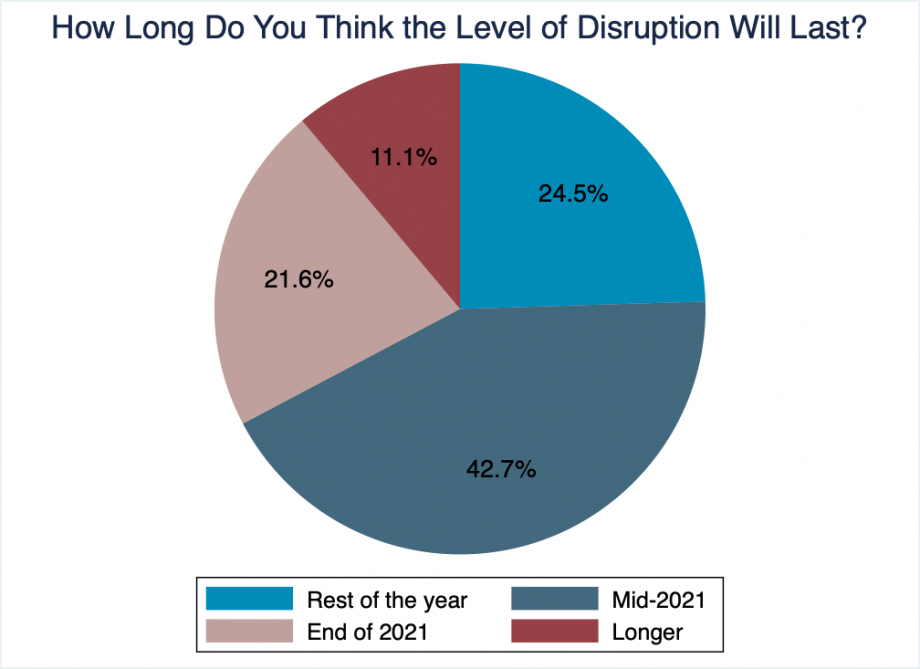
Contributors: David Wiltse Ph.D. and Filip Viskupic Ph.D.
- Contact:
- Telephone number: 605-688-6367
Republishing
You may republish SDSU News Center articles for free, online or in print. Questions? Contact us at sdsu.news@sdstate.edu or 605-688-6161.

